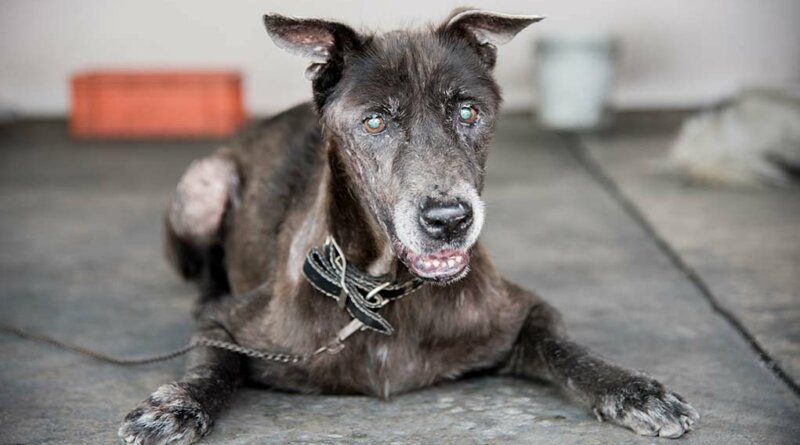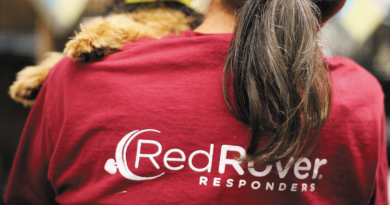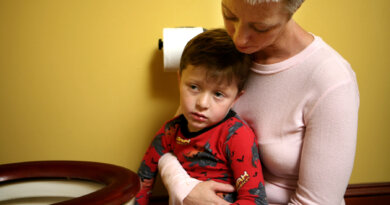Here’s How to Adjust and Help Your Blind Pet
If you suspect your dog going blind, it’s likely to be a difficult transition for you. However, remember that most dogs cope with this condition quite comfortably. And unlike humans, dogs never use eyesight as a primary sense. The interaction between you and your blind dog will change only slightly since visually impaired dogs will adjust to this reasonably well.
Causes of Blindness in Dogs
Vision impairments aren’t rare in dogs, mostly due to heredity, aging, injury, or disease. In the best case scenario, they experience hazy vision, but sometimes will suffer complete blindness. Other than aging, the dog may go blind as a result of several health issues.
Diabetes. By estimates, 10% of dogs worldwide will become diabetic eventually. Approximately 80% of them will develop cataracts that may later result in blindness. If left untreated, cataracts may lead to LIU (lens-induced uveitis, PDF) which causes glaucoma and consequential damage to the dog’s optic nerves and retina. In this case, total blindness is unavoidable.
PRA. Progressive retinal atrophy is a generally inherited deterioration of the cells of the retina, most often found in Cocker Spaniels, Collies, Schnauzers, and Poodles. This condition will almost always lead to blindness in dogs.
SARDS. In a case of suddenly acquired retinal degeneration syndrome, dog’s total blindness may occur in a few weeks or even days. The deterioration of the retina is painless but affects both of dog’s eyes.
Other possible causes for a dog going blind may include:
- Untreated infection of the eye
- High blood pressure
- Epilepsy
- Heart, liver, and kidney diseases
- Stroke
- Cushing’s disease
- Cancer
How to Detect Loss of Vision in Your Dog
There will be many signs that your dog is starting to experiencing vision loss or total blindness, including:
- Sudden apprehensive behavior in a well-known environment
- Inability to find water and food bowls
- Clumsiness
- Bumping into furniture and walls
- Excessive sleeping
- Avoiding night walks
- Confusion
- Disorientation
- Physical changes in the eyes
One or two symptoms appearing occasionally may mean nothing. However, the occurrence of most of them means immediate veterinary care is required. After a physical exam, the vet will determine the degree of vision loss in the dog, and a probable cause of the condition.
The diagnosis may require blood tests, a cerebral spinal fluid test, neurological exam, ophthalmologic exam, MCR, or CT scan. If necessary, a veterinary ophthalmology specialist will conclude if the condition is reversible or not, and then prescribe adequate therapy.
How to Help a Blind Dog Adapt
The relationship between your blind dog and yourself shouldn’t change too much regardless of the pet’s blindness. With a little effort, it is possible to enhance the life of the animal without disturbing the everyday life of the household.
Communication
The importance of talking with a blind dog is huge since it will increase your pet’s sense of security and confidence. However, it is necessary to change the way you communicate with your pooch from now on.
The new type of interaction with blind dogs needs to become more vocal since the dog starts learning to behave in a new way, by using only sounds as prompts. The way to prevent high sensitivity to touching and fear in your pet dog is to make a supportive and relaxed environment where they can feel safe.
New routines and schedules
Establishing new rules, including strict timing for feeding, will help your blind dog cope with the new situation. Always keep your pet’s food and water bowls, crate and bed, in the same spots. Prioritize routine to prevent stress in the dog. Daily walking along the same route will help your pooch adjust to the newly created circumstances.
Re-training
If you haven’t already, then teaching your blind dog some commands such as ‘watch out,’ ‘stop,’ and ‘stay’ is an essential safety measure. The orders like ‘step down’ and ‘step up’ will help the dog navigate the stairs, for example.
There is one more crucial thing: it is necessary to re-train the dog to come when called. It won’t be enough just to say the command or your pup’s name. The best way is to use continuous sound to let the dog time to find a way to come.
Guiding
When you start noticing your dog going blind and losing their eyesight, it is recommended you begin guiding them around the house as a warning of dangerous locations. If needed, work on boundary training as well.
It is a particularly crucial step in a case your pet becomes blind very suddenly. After a short time, the blind dog will develop a ‘mental map’ that will help them with orientation.
Taking a walk with the dog on the short leash and with a harness will be a positive experience. That way, you can always help direct the animal where to go. Plus, those walks will strengthen the blind dog’s confidence in the owner and make it secure.
Furniture
When your dog loses sight gradually, you may need less re-training and simply move some of the furniture around, then walk through the areas with your dog. That way, your pup will memorize the environment and follow the ‘map’ without risk of injury.
Other senses
The quickest way to help a blind dog adjust to their new condition is by activating smell, sound, and touch. For example, spraying three different scents in the three most common areas will help the dog recognizing where the food, water, and resting places are. Always use the same fragrance in each location without exception.
Over time, you may be able to use scents to indicate danger, such as stairs or holes. On the other hand, various textures like wood chips or bells around trees and bushes or rugs in front of a piece of furniture and the back door will help the dog in orientation, too.
Games
Toys, especially those making a sound, are an excellent solution for preventing the withdrawal of the blind dog. It is necessary to find a way to engage and entertain your blind pet since it will be prone to stop interacting with the environment as soon as their vision begins to weaken.
Some of the best sound-making toys for blind dogs are:
Conclusion
If you notice your dog going blind, do not panic. Sometimes, this condition is unavoidable, and you’ll have to adjust your lifestyle a little bit. The care of a blind dog is not an easy job, but it is not too complicated either. In fact, every owner can learn to handle the situation and achieve astonishing results over time.
The good news is that your dog won’t mind the loss of vision and most of them adjust to these circumstances reasonably well. The dog will need a safe and cozy zone to feel protected, new rules to help them get used to these new circumstances, and more attention of their owner to overcome the new vision problem more comfortably.
READ NEXT: Eye Infections in Dogs (Based on Studies)






Você também pode personalizar o monitoramento de determinados aplicativos, e ele começará imediatamente a capturar instantâneos da tela do telefone periodicamente.
Najczęstszymi przyczynami niewierności między parami są niewierność i brak zaufania. W czasach bez telefonów komórkowych i Internetu kwestie nieufności i nielojalności były mniejszym problemem niż obecnie.